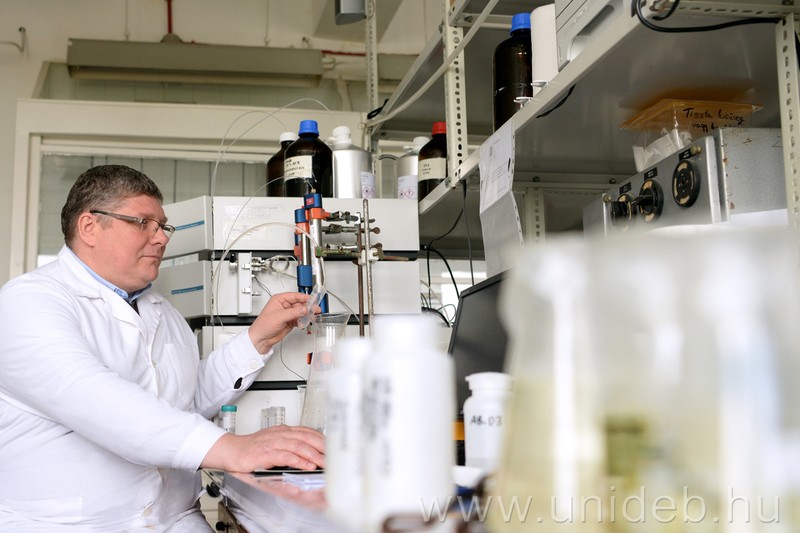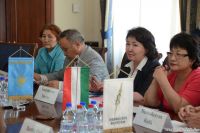Gyula Tircsó, head professor of the Faculty of Science and Technology of the University of Debrecen, will report on his research at renowned German universities in the coming months as part of the György Hevesy lecture series. An invitation from renowned foreign researchers is considered a prestigious professional recognition.
The lecture series named György Hevesy was created by the Association of Hungarian Chemists and the German Chemical Society (GDCh). The first performances were held in 2008 in Hungary and Germany. The two organizations put forward candidates for the lecture, and then a four-member committee consisting of the most famous German chemists (Barbara Kirchner, Tobias Beck, Angela Casini, Christoph Schneider) selects the researcher.
The high-ranking professional recognition was recently won by Gyula Tircsó, head professor of the Department of Physical Chemistry of the Faculty of Science and Technology of the University of Debrecen. The professor conducts research in the field of chemistry of medical imaging. His research focuses on improving the physicochemical properties of Magnetic Resonance Imaging (MRI) contrast agents, as well as, more recently, replacing (potentially) toxic gadolinium complexes with other contrast agents. These are primarily based on manganese(II) compounds that are less dangerous for the living organism but have the same or even better parameters. The use of Mn(II) complexes establishes the connection between MRI and nuclear medicine (Positron Emission Tomography, PET) thanks to the diversity of diagnostic Mn(II) isotopes.
The award reflects the recognition of representatives of radiochemists. On the one hand, this indicates to me that the activities of the Rare (earth) metal Research Group under my leadership are also visible from abroad. On the other hand, an award marked with the name of a Hungarian Nobel laureate chemist is particularly significant for all Hungarian researchers. I consider it important to point out that the work of the research group founded by emeritus professor Ernő Brücher – which, until the early 2000s, mainly involved the chemical examination of contrast agents used in Magnetic Resonance Imaging (MRI) – has now been recognized in the field of nuclear medicine with this award
– emphasized the professor.
Gyula Tircsó added: the successful professional work required the supportive cooperation of the Debrecen radiochemist, physician, and physicist colleagues and contributing partners (DE ÁOK Department of Nuclear Medicine, ScanoMed, ELKH Atomki). I would like to continue the joint work in the future.
The invitations are addressed to German universities where significant research in the field of nuclear medicine is taking place. According to the plans, Gyula Tircsó will give his lectures between October 26-28 at the universities of Heidelberg, Tübingen and Jülich.
Before Gyula Tircsó, six researchers received the opportunity, which is considered a significant professional recognition (Ferenc Fülöp, Szeged, Lutz F. Tietze, Göttingen, Pál Ormos, Szeged, Zoltán Kónya, Szeged, Gerald Brezesinski, Potsdam, Karsten Krohn, Paderborn).
The lecture series is named after György Hevesy (1885-1966), a Hungarian chemist who also researched and taught in Germany. In 1943, he received the Nobel Prize in Chemistry for the development of the radioactive tracer method.
More information can be found here.
unideb.hu


















